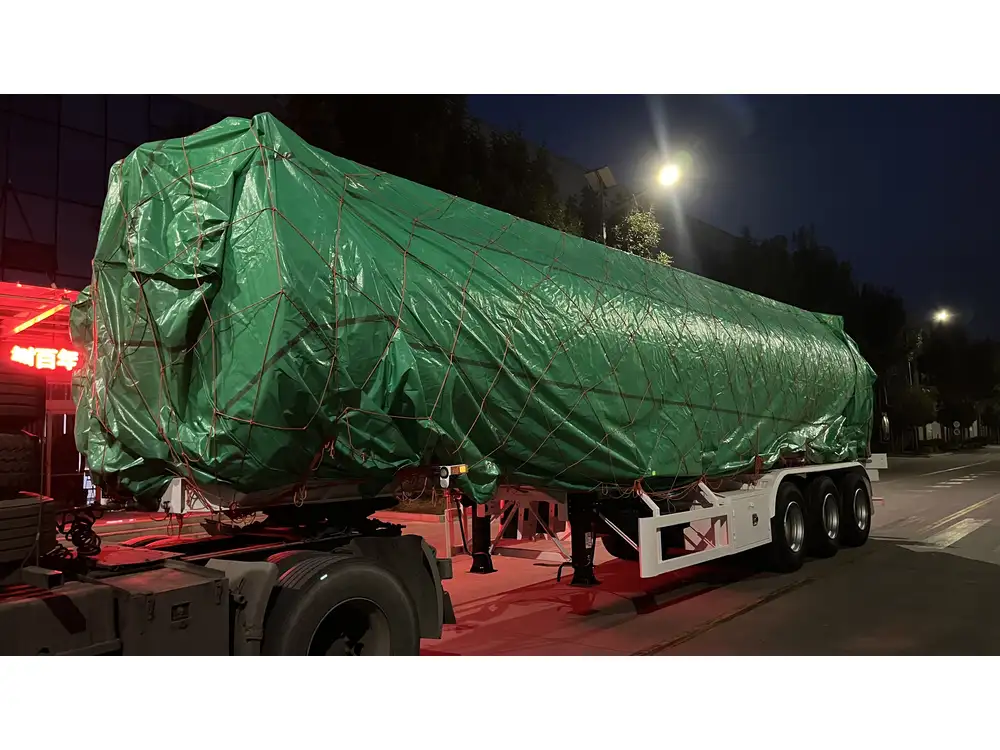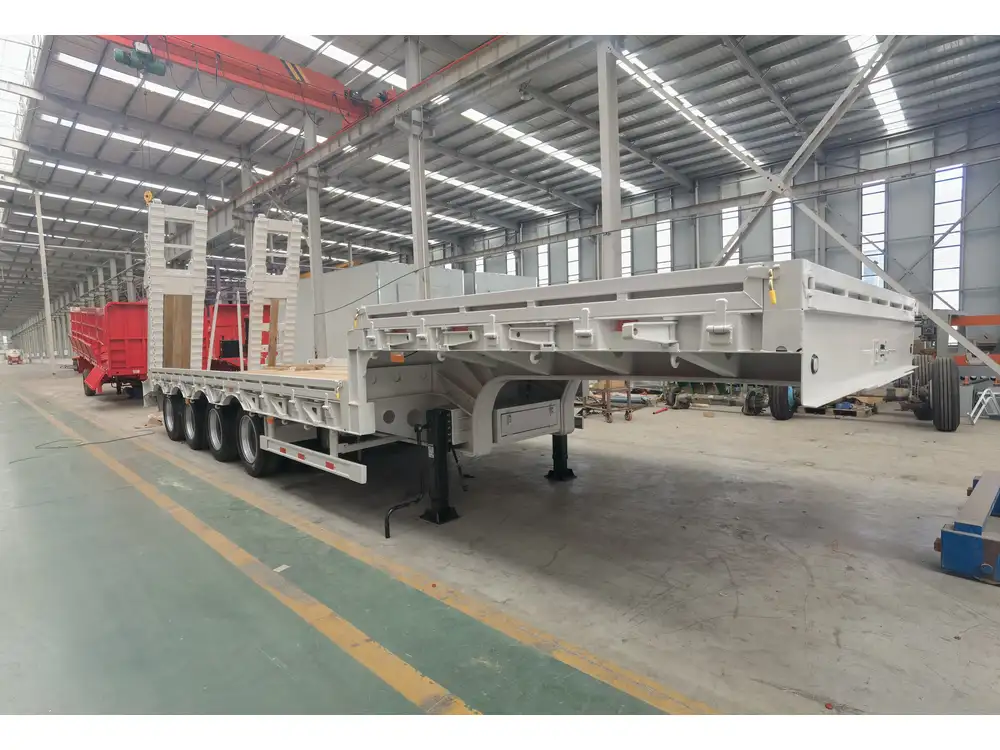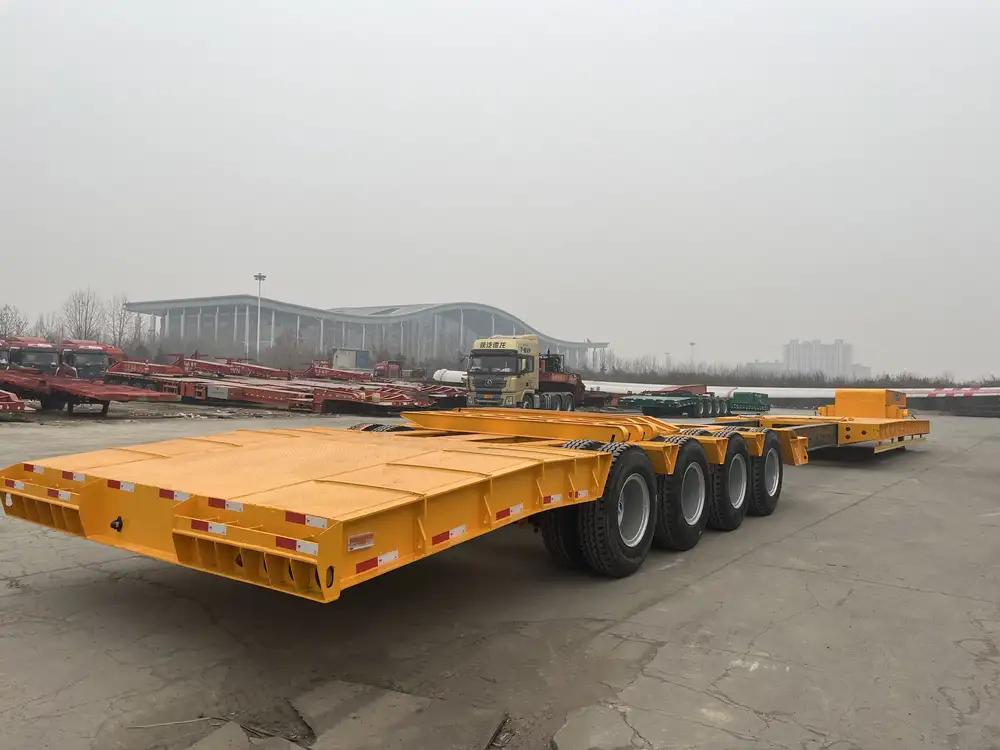When it comes to transportation and logistics, understanding the specifications of vehicles is crucial for ensuring efficiency and compliance. One key aspect that often comes under scrutiny is the length of semi flatbed trailers. The importance of this knowledge spans across various sectors, from shippers to manufacturers and end-users. Let’s dissect the intricacies surrounding the dimensions of these vital transport tools.
Defining Semi Flatbed Trailers
Before diving into the specifics of length, it’s essential to clarify what constitutes a semi flatbed trailer. Typically, a flatbed trailer is a versatile, open platform vehicle designed for transporting various types of cargo. Its characteristics include:
- Open Design: No sides or roof, allowing for easy loading and unloading.
- Versatility: Suitable for carrying heavy equipment, bulky items, and even containers.
- Material Options: Commonly constructed from steel, aluminum, or composite materials for enhanced durability.
Understanding these features can provide context on how length impacts usability and design.
Standard Lengths of Semi Flatbed Trailers

Common Dimensions
In the United States, semi flatbed trailers come in various standardized lengths to suit different hauling needs. Below is a breakdown of typical lengths:
| Type of Trailer | Standard Lengths (feet) |
|---|---|
| Regular Flatbed | 48 to 53 |
| Extendable Flatbed | 48 to 80+ |
| Step Deck | 48 to 53 |
| Double Drop | 48 to 53 |
The most prevalent length for standard flatbed trailers is 53 feet, a preference rooted in federal regulations aimed at optimizing cargo transport efficiency without compromising road safety.
Variations Based on Use
Navigating the complexities of trailer lengths involves recognizing that the choice often hinges on the specific transport requirements, operational parameters, and state regulations.
- Extendable Flatbeds: Ideal for transporting oversized loads, these trailers can stretch beyond the standard lengths, making them particularly useful for shipping unusually shaped items or larger machinery.
- Step Deck Trailers: Also known as drop deck trailers, these are usually 48 to 53 feet long but offer lower deck heights, allowing for the transportation of tall equipment without exceeding height regulations.
Factors Influencing Trailer Length Selection
Selecting the appropriate length for a semi flatbed trailer is not a straightforward matter. Several critical factors need to be considered, each one capable of impacting operational efficiency and legal compliance:

Regulatory Considerations
The Federal Highway Administration (FHWA) stipulates length and width regulations to ensure road safety and efficiency. These regulations can differ from state to state, so it’s vital to be aware of local laws that govern trailer dimensions.
- Maximum Length Limits: Typically capped at 53 feet for semi-trailers, any deviation necessitates a special permit.
- Width Restrictions: Most states impose a maximum width of 8.5 feet for trailers.
Cargo Type
The nature of the cargo being transported greatly influences trailer length:
- Heavy Machinery: Often requires specialized trailers like extendable flatbeds or step decks to accommodate size and weight.
- Building Materials: Can often fit comfortably onto more standard sizes (48 to 53 feet) due to the modular nature of supplies.
Load Distribution and Weight Limits
It’s not just length that matters; weight distribution is crucial for maintaining stability during transit. Overloading or improperly balancing cargo can pose significant safety risks.

Maneuverability
Longer trailers can provide greater capacity but may also reduce maneuverability. It’s essential to consider delivery locations, turns, and on-road conditions when determining the appropriate length.
Comparison of Trailer Lengths for Different Applications
The following table explores how different lengths of flatbed trailers cater to specific hauling applications:
| Application | Ideal Length (feet) | Trailer Type |
|---|---|---|
| Heavy Equipment | 53+ | Extendable Flatbed |
| Lumber and Building Materials | 48-53 | Regular Flatbed |
| Large Machinery | 53+ | Step Deck or Extendable |
| Oversized Loads | 60+ | Custom Extendable |
Each application outlined above showcases the adaptability of semi flatbed trailers in accommodating specific cargo types, thus optimizing freight transport.
Regional Variations in Trailer Length Requirements

North America
In the U.S. and Canada, regulations are fairly unified due to agreements between provinces and states, generally allowing semi flatbed trailers to operate at lengths of 53 feet. However, exceptions exist based on local regulations.
Europe
In contrast, European countries often have lower maximum lengths due to narrower roads and different logistical standards. Typically, the maximum allowable length for a semi trailer is restricted to 16.5 meters (approximately 54 feet), with some countries permitting longer trailers under specific conditions.
Asia and Other Regions
Regions like Asia vary significantly. For example, in China, the truck and trailer combinations can go up to 18.75 meters (about 61.5 feet), reflecting regional infrastructure needs and freight types.

Evaluating the Pros and Cons of Longer Trailers
Advantages of Longer Trailers
- Increased Capacity: Longer trailers can accommodate more cargo, making them cost-effective for high-volume shipments.
- Flexibility: They can handle larger, oversized loads that standard lengths may not match.
Disadvantages of Longer Trailers
- Maneuverability Challenges: Longer trailers may struggle to navigate tight urban environments or winding roads.
- Increased Wear and Tear: Longer lengths can lead to accelerated wear on tires and components due to added stress.
- Regulatory Barriers: Certain routes may not allow longer vehicles, limiting operational flexibility.

The Importance of Compliance and Safety
Choosing the correct length for a semi flatbed trailer is not merely a logistical concern; it encompasses safety and regulatory compliance. Disregarding guidelines can result in penalties, accidents, and increased liability.
Ensuring Proper Documentation
When operating longer trailers or unique configurations, maintaining the appropriate paperwork is essential. Key components include:
- Special Permits: Needed for oversized cargo or loads exceeding standard dimensions.
- Insurance Coverage: Comprehensive insurance policies protect against unforeseen circumstances related to length regulations.
Conclusion
Navigating the world of semi flatbed trailer dimensions involves several interconnected elements—from regulatory compliance and safety to the specific needs dictated by the type of cargo being transported. Understanding the lengths available, their advantages, and their drawbacks equips operators, manufacturers, and shippers with the tools necessary for effective decision-making.
In summary, semi flatbed trailers predominantly range from 48 to 53 feet, while extensions allow customization for specialized needs, ultimately shaping the logistics landscape. Awareness of these intricacies will foster safer, more efficient hauling practices, ensuring that users maximize their capabilities and comply with legal requirements.



